The tool for calculating a product’s impact on the environment
LCA, which stands for Life Cycle Assessment, is an objective procedure for assessing the potential environmental footprint related to a product, process or service carried out throughout its life cycle.
This is done by quantifying the use of resources, such as: energy, raw materials, materials and waste released into the environment.
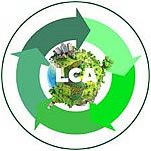 The distinguishing element of this tool is that it allows us to go through all phases of the product life cycle. It starts from the extraction and processing of raw materials, through the production and assembly of the product, to distribution, use phase, and end of life.
The distinguishing element of this tool is that it allows us to go through all phases of the product life cycle. It starts from the extraction and processing of raw materials, through the production and assembly of the product, to distribution, use phase, and end of life.
Therefore LCA gives the possibility of performing an analysis on the totality of the phases of the product's life cycle and is precisely aimed at highlighting what the impacts are, but especially how they are distributed from one phase to another.
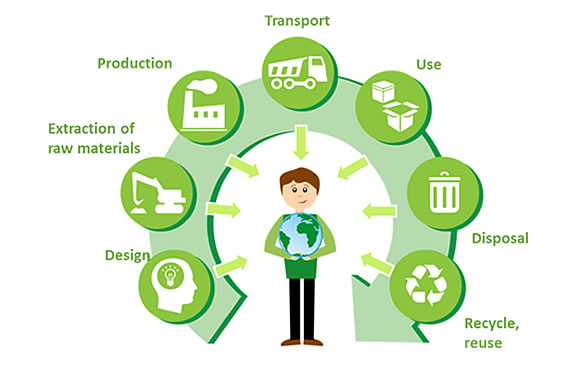
So, by bringing the entire life cycle of the system being analyzed to the center of the assessment, it makes possible to go to work on the phases that have the greatest impact.
The legislation - The standard that follows the LCA procedure is the one of the ISO 14040 series, which is distinguished by two standards: on the one hand the ISO 14040 standard and on the other hand the ISO 14044 standard. The ISO 14044 standard also gives a definition of LCA, defining this analysis as the compilation and evaluation of input and output process flows through the entire product life cycle, so that all environmental impacts can be calculated at every point in the product's life.
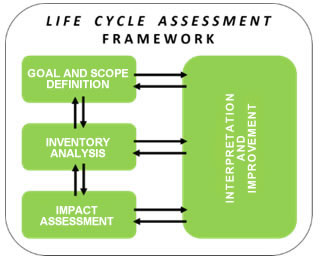 ISO 14044 is a more technical standard in which the requirements and guidelines are provided, as well as the methodologies that will need to be undertaken operationally in carrying out this analysis. The regulation requires that the analysis will be conducted based on the four stages illustrated in the figure alongside.
ISO 14044 is a more technical standard in which the requirements and guidelines are provided, as well as the methodologies that will need to be undertaken operationally in carrying out this analysis. The regulation requires that the analysis will be conducted based on the four stages illustrated in the figure alongside.
(1) The first step is to define the goals and objectives and consists of defining the motivation for conducting the study.
For example, it could be said that one of the objectives was to identify critical points in a process, or the intention may be to compare two products, or to obtain an EPD (Environmental Product Declaration) certification.
At this stage it is important to establish the target audience for communicating the results.
The other key elements to be defined are the system being analyzed and its functional unit. In fact, depending on the type of product you decide to analyze, it may be measured in kg, kW, square meters, number of pieces. The functional unit is fundamental since all the input flows that will be fed into the system will be related to it.
At this stage, it should also be defined which is the category of impact of greatest interest that we want to focus on.
Regarding system boundaries, three different system boundaries for LCA analysis can be distinguished, and these will be chosen according to the different types of products.

a. From cradle to grave, from raw material extraction to end-of-life management;
b. From gradle to gate, which, on the other hand, is that assessment from the extraction of raw materials to the company's doors, then until the product is ready to be sent to the customer;
c. Gate to gate, which is simply the analysis on a single business process.
(2) Inventory analysis, the second step provided by ISO 14040, is the core of the LCA methodology. It consists of quantifying all the process inputs that are included in the analysis to be carried out. It is certainly the most challenging phase because its purpose is to provide us with all those data that enable a system to function.
First, the techniques for collecting the data and the techniques for processing them are defined, but certainly the most relevant aspect at this stage is the construction of a process diagram, which captures all the processes that we have included in our analysis.
(3) The impact assessment stage is where the transition is made from the objective data quantified in the inventory stage to the environmental hazard judgment. It is calculated using specific conversion factors that can be found within international databases specific to LCA analysis.
This phase is then aimed at expressing the magnitude of the environmental impacts of the product being analyzed. What is obtained as a final result is a numerical indicator.
(4) The last stage is the interpretation stage. In this stage, the impacts and significance of the values of the different impact categories are evaluated. Then one tries to understand whether the values that were generated by the analysis are critical values or not. The results obtained will be related to the objectives that were set at the beginning of the study, those that were established in step (1).
The purpose is to identify the changes needed to reduce the environmental impacts of the system under analysis and to put in place the improvement activities and actions.
The impact categories - A large amount of emissions data is collected during LCA analysis, but it is important to emphasize that emissions from raw material extraction are very different from, for example, relevant emissions from electricity consumption. LCA allows us precisely to combine the different emissions from the different impact categories and especially to translate them into usable numbers.
In essence then, different emissions that nevertheless cause the same impact are collected into a single effect on the environment.
For example, if we talk about the climate change category, it includes within it different types of emissions: it collects emissions in the form of gases, which can be water vapor, or carbon dioxide, or methane, or nitrogen oxides. The result comes from the fact that each of these gases has a specific conversion factor that links it to the final indicator, in this case CO2 eq.
Let us now see what the main impact categories are:
- Resource consumption
This category is divided into two subcategories: (1.1) depletion of fossil fuels and (1.2) depletion of non-fossil fuels. - Water consumption
This is the indicator of the relative amount of water used. Depending on the type of product, water consumption may vary. - Climate change
This is the category that is catching on the most and is in effect becoming the measurement indicator for calculating environmental sustainability. It corresponds to the emission of greenhouse gases.
Also this category can be divided into three subcategories that tell us how much of the CO2 eq emissions come from the use of (3.1) fossil resources, how much from the use of (3.2) biological resources, and how much from (3.3) land use change. - Acidification
It refers to the process by which aquatic and terrestrial ecosystems become more acid due to the release of certain acids, such as: sulfur oxide, nitrogen oxide, ammonia, hydrofluoric acid, and hydrochloric acid. - Eurotrophication
This is the category that identifies the change in biological productivity experienced by seas, lakes or soils. - Reduction of the atmospheric ozone layer
This refers to the emission of those gases that cause stratospheric ozone depletion. - Human toxicity
It is the index of the impact on humans of toxic substances released into the environment. It can be distinguished between non-carcinogenic and cancer-related toxic substances. - Ecotoxicity
It is the index of the impact on freshwater organisms of toxic substances released into the environment. - Particulate matter emissions
It is the indicator of the potential incidence of disease due to particulate emissions. - Soil consumption
It is the measurement of changes in soil quality.
 Strengths- LCA is used as an instrument in response to an increasing market demand for a commitment to the environment on the part of companies. In fact, it is now evident to all that the issue of sustainability is increasingly gaining momentum, but this also stems from the fact that upstream the European Union has set goals in this regard, aimed primarily at avoiding global warming.
Strengths- LCA is used as an instrument in response to an increasing market demand for a commitment to the environment on the part of companies. In fact, it is now evident to all that the issue of sustainability is increasingly gaining momentum, but this also stems from the fact that upstream the European Union has set goals in this regard, aimed primarily at avoiding global warming.
These goals mean that the behaviors of individuals and businesses must follow a logic that takes into account the impacts towards the environment.
Direct applications and benefits of this methodology are:
- Improving a product from an environmental perspective, compared, for example, to a competing product or market benchmark;
- Making the complexity of the entire product life cycle better understood and managed. In fact, perhaps for the first time, one goes to analyze not the single process but all the processes involving the product itself. This makes it possible at a later stage to try to put improvement activities in place;
- Achieve optimization of consumption and thus energy expenditure;
- It increases the value of both the product, in that it is able to communicate additional information that can distinguish it in the marketplace, and of the organization in that the organization becomes the architect of engaging in activity toward sustainability issues;
- It supports the process of environmental certfication, called EPD certification;
- It supports the eventual redesign of a product that can be greener, aimed at reducing waste and containing consumption;
- It stimulates greater awareness in the direction of environmental issues;
 Weaknesses - On the other hand, the application of LCA methodology also has critical issues, which we can call weaknesses.
Weaknesses - On the other hand, the application of LCA methodology also has critical issues, which we can call weaknesses.
Let's see which ones are the most evident:
- Implementation requires time and resources;
- Need for high quality input data to have a good description of the process to be modeled;
- Very often assumptions and estimates need to be made as it is not always so easy to be able to represent the complexity of the data provided;
- It is likewise difficult to communicate the results in a simple way. It is therefore important to be able to construct a communication plan that allows these results to be as user friendly as possible.
Product certifications that require an LCA
One of the motivations that might lead a company to decide to undertake an LCA analysis is the desire to obtain product certification.
What are the possible product certifications?
The first type of certification is a Type I environmental label.
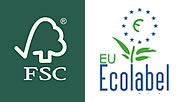 An example of this type of environmental labeling is the Ecolabel label or the FSC label for paper. Both of these labels are based on a product cycle analysis and both are certified by an independent third party.
An example of this type of environmental labeling is the Ecolabel label or the FSC label for paper. Both of these labels are based on a product cycle analysis and both are certified by an independent third party.
This labeling follows the process of the UNI EN ISO 14024:2018 standard. This standard establishes the principles and procedures that must be followed to develop this kind of type I environmental labeling, and within it are expressed what are the types of products that can be included, as well as the functional characteristics that the product must possess.
In contrast then there are those certifications, established by ISO 14021:2016, which concern product environmental self-declarations. Unlike Type I environmental labels, Type II environmental labels require neither minimum criteria, nor the fact that there is a third-party body to verify and certify the LCA analysis performed.
So we can say that these are voluntary self-certifications that a company decides to undertake on its own.
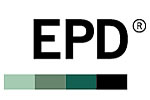 Finally, there is EPD (Environmental Product Declaration) certification. This is an environmental product certification that goes to declare the environmental performance of the product itself, providing information on the impacts from all the different impact categories.
Finally, there is EPD (Environmental Product Declaration) certification. This is an environmental product certification that goes to declare the environmental performance of the product itself, providing information on the impacts from all the different impact categories.
The results obtained can be considered reliable because the certification is obtained in compliance with the UNI EN ISO 14025:2010 standard by an independent body.
Connected to the UNI EN ISO 14025:2010 standard is the UNI EN ISO 14067:2019 standard. This standard leads to a certification similar to EPD, but different in that it is related only to the accounting of greenhouse gas emissions, and therefore only to the emission of CO2 eq. It is therefore a certification that goes to give evidence of impacts from impact category No. 3 - climate change only.

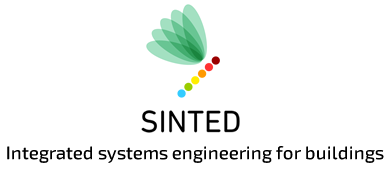
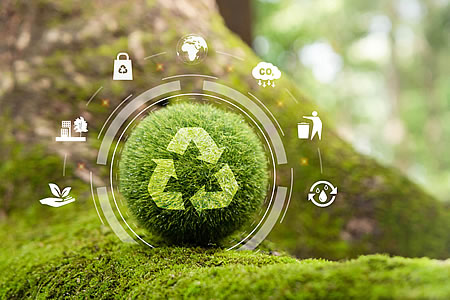
 Integrated systems engineering
Integrated systems engineering